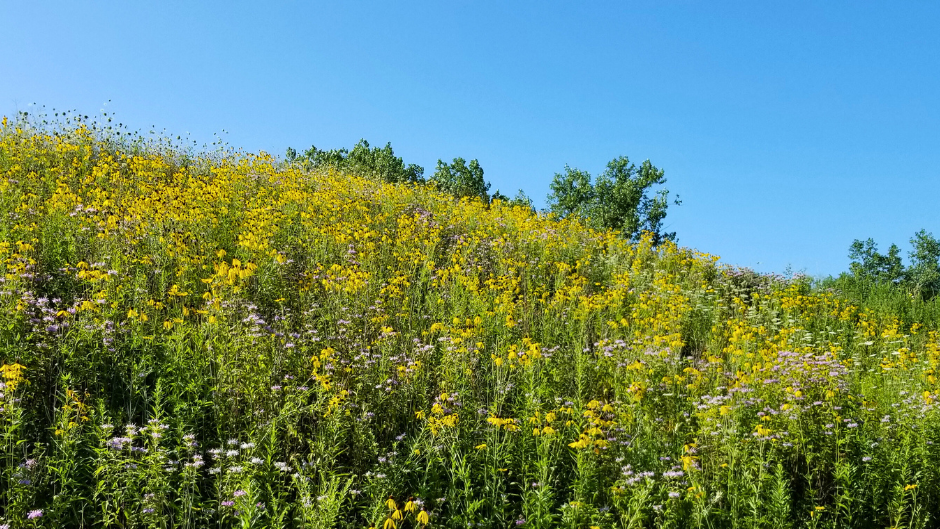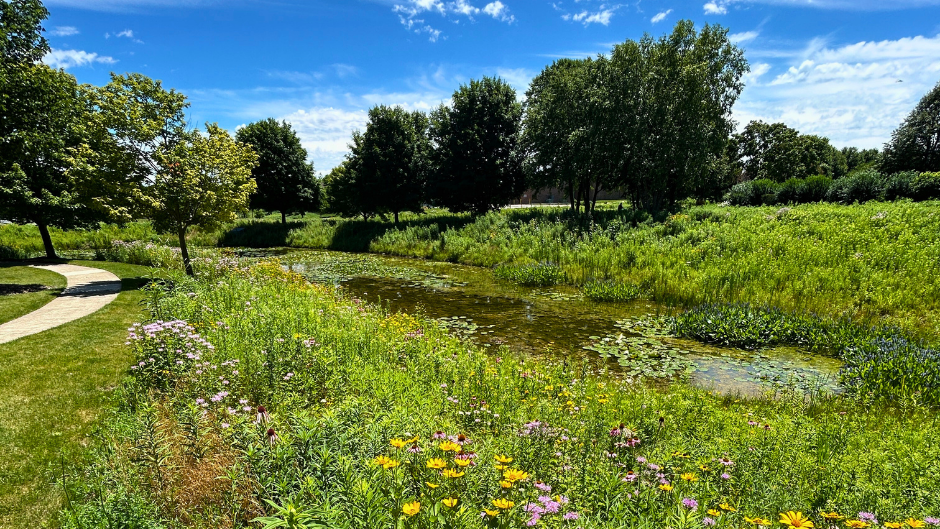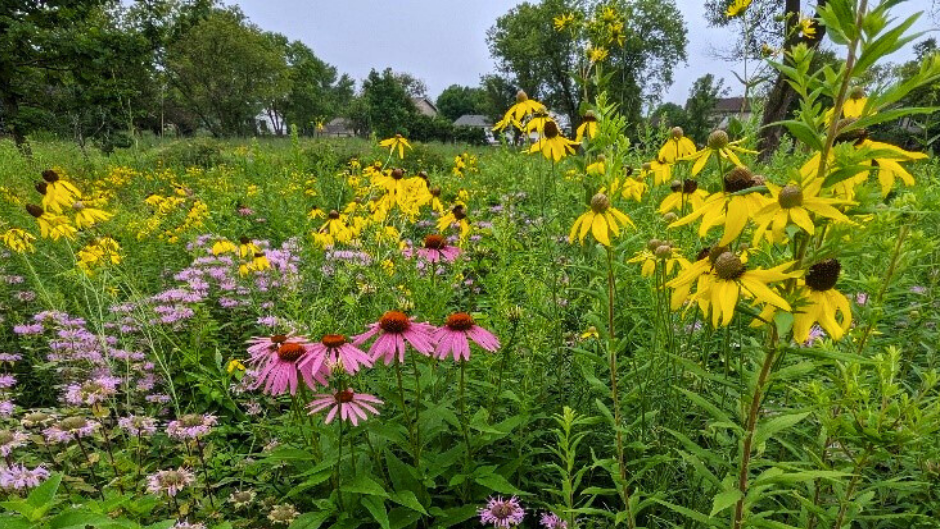The Village of Algonquin, IL
Welcome to the website for the Village of Algonquin!
Natural Area Maintenance & Conservation
Since 2000, Algonquin has retained over 750 acres of natural space and actively managed and restored more than 400 acres.
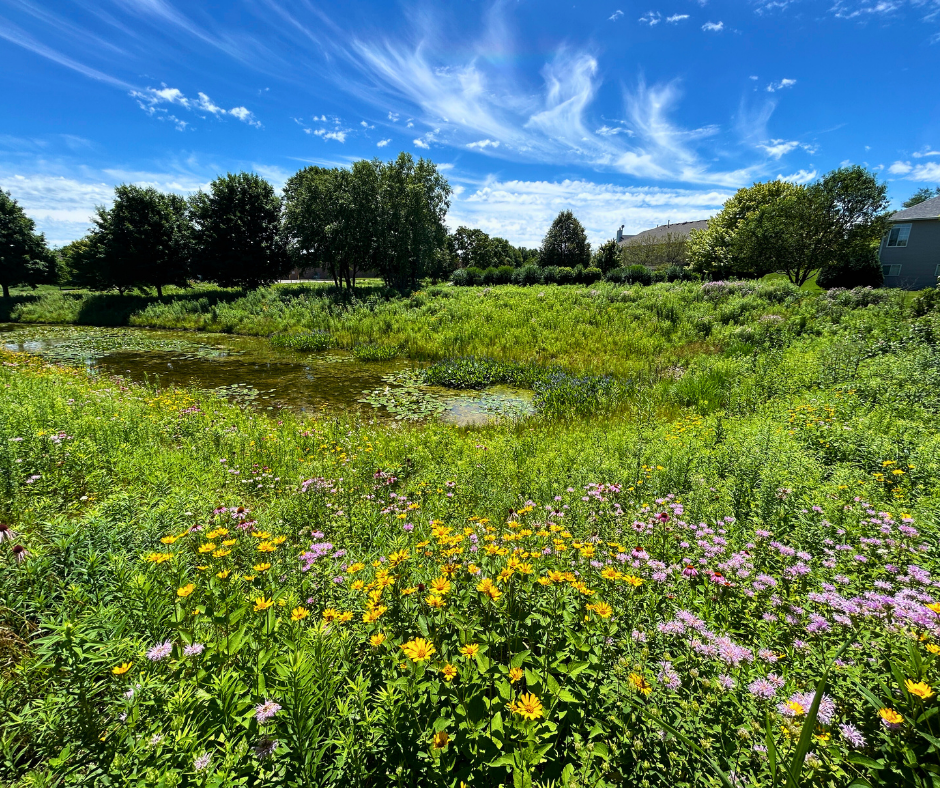
Explore Topics
Natural Area Maintenance in Algonquin
The Village of Algonquin actively maintains and restores natural areas to protect local ecosystems, improve environmental quality, and support long-term sustainability. These efforts are essential to preserving the character of the community while enhancing the function of open space.
One key aspect of this work is the care and management of prairie and pollinator habitats. These native landscapes enhance biodiversity, improve soil health, manage stormwater, and provide essential habitats for pollinators. Regular maintenance—including prescribed burns, selective mowing, and invasive species control—ensures these areas continue to thrive.
Learn more about prairie and pollinator establishment in Algonquin.
Prescribed burns are a crucial tool in restoring and maintaining natural areas. These controlled fires help manage invasive species, promote native plant growth, and improve ecosystem health. All prescribed burns in the Village are conducted by trained professionals following strict safety protocols. Burns are typically completed by May 1 each year, weather permitting.
Prescribed Burn Schedule | 2025
| Location | Acreage | Date |
|---|---|---|
| Algonquin Public Works Facility | 2.3 | Completed |
| Blue Ridge Detention Basin | 3.4 | Completed |
| Countryside Detention Basin | 0.9 | Completed |
| Highland Avenue Detention Basins | 1.7 | Completed |
| Holder Park Detention Basin | 1.4 | Completed |
| Lake Drive South Nature Preserve | 3.6 | Completed |
| Pioneer Road Bluffs | 3.4 | Completed |
| Souwanas Creek Riparian Corridor | 5.0 | Completed |
| Spella Park Wetland | 88.0 | Completed |
| Trails of Woods Creek Natural Area | 32.9 | Completed |
| Wastewater Treatment Plant | 3.7 | Completed |
| Western Bypass Prairie | 7.4 | Completed |
| Yellowstone Detention and Woodland | 6.8 | Completed |
Benefits of Ecological Restoration
Natural area restoration is more than just landscape enhancement—it plays a vital role in protecting the environment and improving long-term water quality. These efforts support healthier ecosystems, more resilient infrastructure, and cleaner waterways throughout the Village and beyond.
Key benefits include:
- Water Quality Benefits: Improved stormwater infiltration and aquifer recharge, reduced erosion and sedimentation, and filtration of pollutants before they reach waterways all contribute to cleaner runoff and healthier aquatic ecosystems.
- Environmental Benefits: Restoration activities support erosion control, increase carbon sequestration, enhance habitat for native species, and protect rare ecosystems while improving soil health.
- Cultural Ecosystem Benefits: Natural area maintenance improves the aesthetic value of open spaces, provides passive recreation opportunities, and can increase adjacent property values.
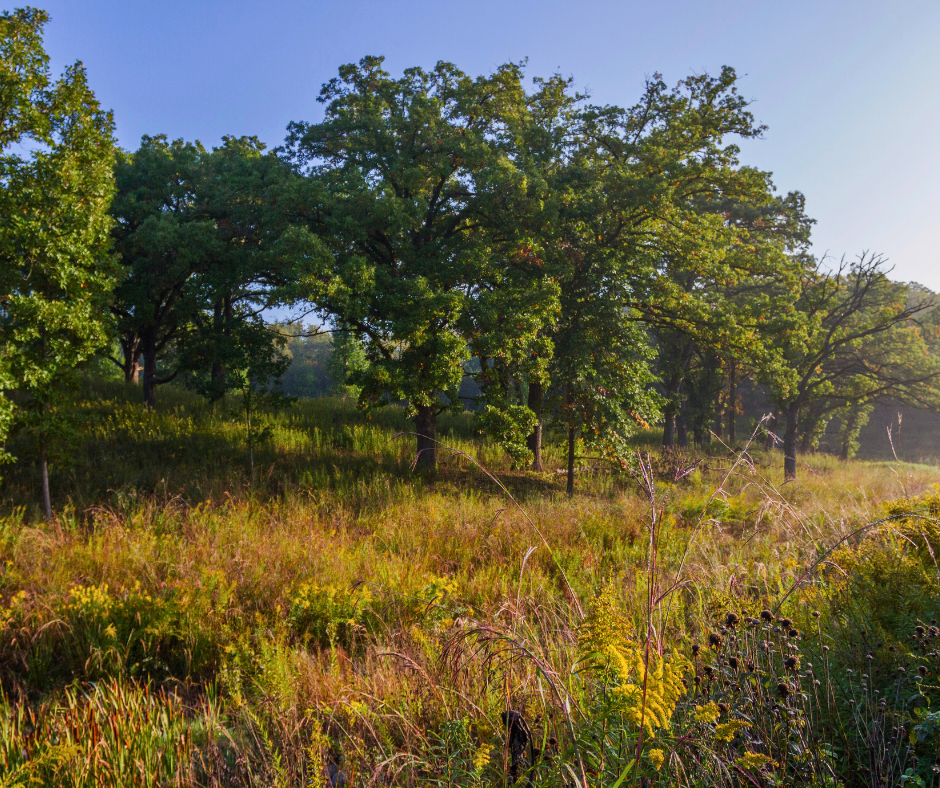
Conservation Recognition & Milestones
For four decades, Algonquin has demonstrated a strong commitment to environmental stewardship through innovative programs, long-term planning, and proactive conservation efforts. This commitment has earned the Village recognition at both the regional and national levels. Below is an overview of key awards and a timeline of major environmental initiatives.
Tree City USA & High Growth Community
Arbor Day Foundation
1996–Present
Mayor's Monarch Pledge
National Wildlife Federation
2022–Present
Certificate of Environmental Achievement
Metropolitan Mayors Caucus
2017
Explore the timeline below for a decade-by-decade look at the Village’s significant environmental milestones:
- Introduced water conservation regulations
- Adopted Tree Preservation Code
- Launched volume-based recycling program
- 1996: Designated Tree City USA by Arbor Day Foundation
- 2001: Adopted Woods Creek Watershed Protection Plan
- 2002: Launched Conservation Community Program
- 2005: Completed Comprehensive Natural Areas Inventory
- 2007: Developed Natural Areas Stewardship Program
- 2007: Recognized as a Clean Air Counts community
- 2007: Adopted Groundwater Protection Ordinance
- 2008: Adopted Natural Areas Protection Ordinance
- 2009: Nominated for McHenry County Council of Governments Model Program Award for Natural Areas Stewardship Program
- 2010: Adopted Environmental Action Plan
- 2010: Adopted Conservation Design Ordinance
- 2012: Received McHenry County Green Award for Solid Waste & Recycling Program
- 2012: Received IEPA 319 Water Quality Grant to Write the Woods Creek Watershed Plan
- 2013: Adopted IEPA Approved Woods Creek Watershed Plan
- 2013: Adopted IEPA Approved Jelkes Creek – Fox River Watershed Plan
- 2014: Launched BYOBag Algonquin Program
- 2016: Received IEPA 319 Water Quality Grant for Woods Creek Reach 2&3 Restoration
- 2017: Converted streetlights to LED
- 2017: Received ComEd Green Regions Program Grant for the Spella Pollinator Project
- 2017: Began recognizing Pollinator Week through Village Board Proclamation
- 2018: Installed electric vehicle charging stations
- 2019: Received ComEd Green Regions Program grant for Woods Creek Pollinator Project Phragmite Control
- 2020: Received Illinois Clean Energy Community Foundation Grant for Holder Park and Woods Creek Trail Detention Naturalizations
- 2021: Received IEPA 319 Water Quality Grant for Ratt Creek Reach 5 Restoration
- 2021: Designated High Growth Community by Arbor Day Foundation
- 2022: Began taking the Mayor’s Monarch Pledge
- 2023: Received ComEd Green Region Grant for Wynnfield Detention Naturalization Project
- 2025: Presented Woods Creek Watershed Based Plan: Ten Years of Successful Implementation at National Watershed Protection and Stormwater Conference
